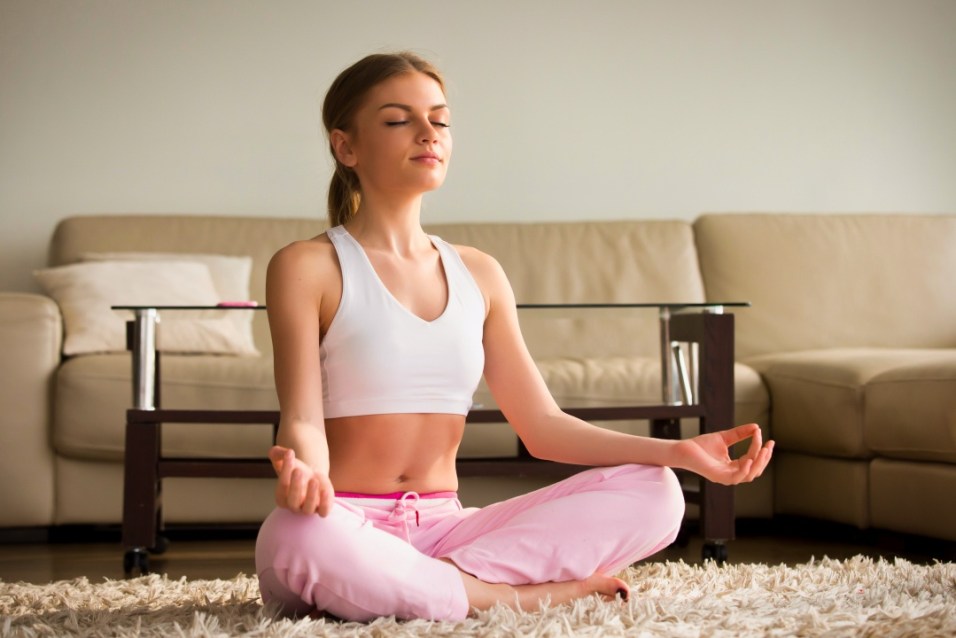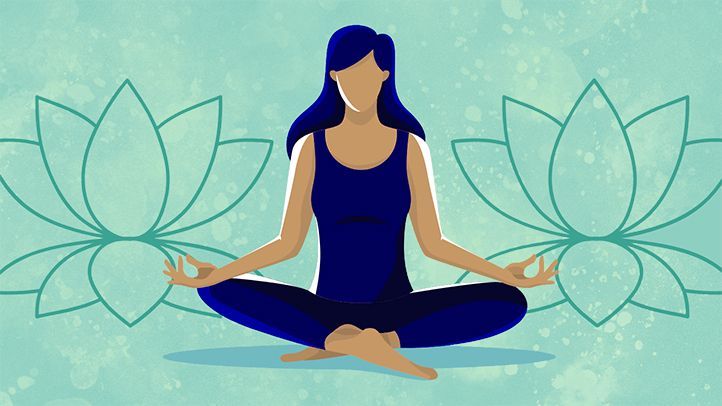
Meditation videos for kids can be found on YouTube and are an easy way to incorporate this practice into your daily routine. These short, but effective programs can be used anywhere and are easy to follow. For beginners, there are animated lessons that can be used to get you started. Typically, the programs focus on positive affirmations and mindful breathing. Some offer advanced techniques, such learning how to meditate with an automatic breathing machine. These programs can be an excellent way to promote healthy sleep habits.
Some people find this type of video very relaxing, with lush colors and floating clouds. Six minutes of narration are used to teach breathing techniques. Images accompany the sounds. The last ten mins are silent and the narrator is the only one guiding the viewer. Although it can be hard to unwind and relax when you watch this video, the narration addresses personality types like control freaks and explains why they shouldn't meditate.

Guided meditation can be a good choice for those who prefer to sleep with the soothing sound of a human voice. These videos are great for helping you fall asleep. Some people find it hard to remain awake during meditation. This video may feature a teacher sharing various methods for meditation. This can improve the quality of the recorded experience. And the best part is, these videos are incredibly convenient. There are many meditation videos available.
Meditation videos of other types are also available to help with personal development goals. These videos often feature interviews with prominent meditation instructors or yogis. Many of them feature lectures and seminars from past events. They can be used as a quick way to get a daily dose of Zen. The goal of these guided meditation videos is to make them more accessible and enjoyable. However, if you want to experience a full-length meditation you can start your journey by watching a YouTube video.
A few meditation videos for children are also available. Peace Out offers a series ten minute guided relaxation videos designed for children. Jamie's friendly voice and bright illustrations make mindfulness more accessible for children. Parents may find the videos helpful. The 10-minute guided meditation is for children and teaches them how to be present in the moment and pay attention to the calming images. It's crucial that parents ensure their kids are taking the best out of meditation videos.

Many meditation videos can be used by beginners or advanced learners. You can find videos for beginners as well as experienced meditators. The most well-known ones are often based on a single mantra. Many meditations also include sounds, visualization, and body parts. These videos are designed to help you relax and calm down. These videos should help beginners to understand and practice yoga. A meditation video is a great option for beginners.
FAQ
Take herbs and other supplements to improve your immunity
It is possible to boost immune function by using herbs and natural remedies. Ginger, garlic, ginger, echinacea and ginkgo biloba are some of the most common.
However, these herbal remedies should not replace conventional medical treatment. Side effects can include nausea, dizziness, stomach cramps and dizziness.
How do you measure body fat?
A Body Fat Analyzer will give you the most accurate measurement of body fat. These devices are used to determine the percentage of bodyfat in people who desire to lose weight.
What is the difference in a virus and bacteria?
A virus is a microscopic organism that cannot reproduce outside its host cell. A bacterium is an organism that splits itself in two. Viruses are small, around 20 nanometers in size. Bacteria are much larger, at 1 micron.
Viruses are spread via contact with infected bodily liquids such as urine, saliva, semen and vaginal secretions. Bacteria are often spread via direct contact with contaminated surfaces or objects.
Viruses may enter the body through cuts, scrapes. bites, or any other break in the skin. They can also enter the body through the mouth, nose, eyes and ears, vaginal, rectum or anus.
Bacteria may enter our bodies through cuts and scrapes on our skin, burns, insect bites, and other wounds. They can also get into our bodies via food, water or soil.
Both viruses and bacteria can cause illness. Viruses can not multiply within the host. They only cause disease when they infect living tissue.
Bacteria may spread to other people and cause sickness. They can spread to other parts of our bodies. To kill them, we must use antibiotics.
What's the difference between a calorie and kilocalorie?
Calories can be used to measure how much energy is in food. The unit of measurement is called a calorie. One calorie represents the energy required to raise one gram of water's temperature by one degree Celsius.
Kilocalories are another way to describe calories. Kilocalories equal one thousandth of a calorie. 1000 calories, for example, equals one kilocalorie.
How does an anti-biotic work?
Antibiotics are medications that kill harmful bacteria. To treat bacterial infections, antibiotics are used. There are many types and brands of antibiotics. Some are taken orally, some are injected, and others are applied topically.
People who have been exposed may be prescribed antibiotics. One example is if someone has had chickenpox and wants to prevent shingles. Or, if someone has had strep throat, he or she might receive an injection of penicillin to help prevent pneumonia.
A doctor should give antibiotics to children. Children are at greater risk of developing side effects from antibiotics than adults.
The most common side effect of antibiotics is diarrhea. Side effects of antibiotics include diarrhea, stomach cramps and nausea. These side effects are usually gone once the treatment is complete.
Statistics
- This article received 11 testimonials and 86% of readers who voted found it helpful, earning it our reader-approved status. (wikihow.com)
- nutrients.[17]X Research sourceWhole grains to try include: 100% whole wheat pasta and bread, brown rice, whole grain oats, farro, millet, quinoa, and barley. (wikihow.com)
- The Dietary Guidelines for Americans recommend keeping added sugar intake below 10% of your daily calorie intake, while the World Health Organization recommends slashing added sugars to 5% or less of your daily calories for optimal health (59Trusted (healthline.com)
- In both adults and children, the intake of free sugars should be reduced to less than 10% of total energy intake. (who.int)
External Links
How To
10 Tips for a Healthy Lifestyle
How to live a healthy life
We live in a fast paced world, where we don’t get enough sleep and smoke cigarettes. We don't properly care for our bodies.
It can be very difficult for someone who works full-time to have a healthy diet. It is even more difficult if you feel stressed. Then, your mind tells yourself that it cannot handle this situation any more so we feel guilty about it and give up.
If you feel like something is wrong with your body, then it probably is. Consult a doctor immediately to get his/her opinion on your current condition. If there are no signs of something abnormal, stress from your job could be the cause.
People believe they are lucky because they can go to the gym every day or have friends who keep them fit. However, those people are really lucky. Those people don’t have any problems. They managed everything. I wish that everyone could be like them. Many of us aren't able to find the right balance between our personal and professional lives. Many people fall prey to bad habits, which can eventually lead them to developing diseases like heart disease, diabetes and cancer.
These are some tips to help you improve your life.
-
Get adequate sleep - 7 hours a day minimum, 8 hours maximum. This includes good sleeping habits and avoiding caffeine for the last hour before bed. Caffeine blocks melatonin, which can make it difficult for you to fall asleep. Your bedroom should be darkened and cleaned. Blackout curtains are a must, especially if you work late at nights.
-
Eat well - Have breakfast every morning. Avoid sugary products, fried foods, white breads, and processed food. Include fruits, vegetables, and whole grain for lunch. For afternoon snacks, it is recommended to eat foods high in protein and fiber like nuts, seeds and beans, fish, dairy products, and fish. Avoid unhealthy snacks like chips, candies, cookies, cakes and sodas.
-
Drink plenty of water - Most of us don' t drink enough water. Water can help us burn more calories, keep our skin supple and young, flush out toxins and improve our digestion. Six glasses of water per day will help you lose weight quicker. The best way to measure your hydration level is by checking the color of your urine. Yellow indicates dehydration; orange signifies slightly dehydrated; pink signifies normal; red signifies overhydrated; and clear signifies highly-overhydrated.
-
Exercise - It has been proven that regular physical activity can improve energy levels and reduce depression. Walking is a good way to get fit and improve your mood. Walking may appear easy but requires concentration and effort. Your brain needs to focus on walking while breathing slowly and deeply. A 30-minute walk for 100 to 150 calories can be burned in 30 minutes. Start slow, and then increase the pace. To avoid injuries, stretch after exercising.
-
Be positive - Positive thinking is essential for mental health. Positive thinking can create a happy atmosphere within us. Negative thoughts drain our energy and cause anxiety. Keep your motivation high by focusing on the things you want to do. If you feel overwhelmed with all the tasks, you can break each task down into smaller steps. It is inevitable that you will fail. But don't worry, just keep trying and get up again.
-
Learn to say no - We often get so busy that we do not even realize how much time we waste doing unimportant things. It is important you can say no when it is necessary. Being polite when you say "no" does not mean that you are rude. You are simply saying "no" to something. You can always find other ways to complete the job later. You should set limits. Ask for assistance from someone else. Oder delegate this job to someone else.
-
Take care of you body. You can boost your metabolism by eating healthier foods. Avoid eating anything heavy or oily as they can raise cholesterol levels. A good tip is to have three meals and two snacks daily. Around 2000 to 2500 calories should be consumed each day.
-
Meditate - Meditation can reduce stress and anxiety. Your mind will relax when you sit still and close your eyes. This exercise will give your mind clarity, which is very important in making decisions. Practicing meditation regularly will make you calmer and happier.
-
Don't skip breakfast. Breakfast should be the most important meal. Skipping breakfast may lead to overeating during lunchtime. It is never too late to eat a balanced breakfast as long as you eat within 1 hour of waking. Eating breakfast boosts your energy and helps you manage your hunger better.
-
Eat clean food - Food affects our moods more than we know. Avoid junk food and other food items that have artificial or preservative ingredients. These products can cause acid reflux and increase cravings. Vitamins and minerals found in fruits and vegetables can improve your overall health.